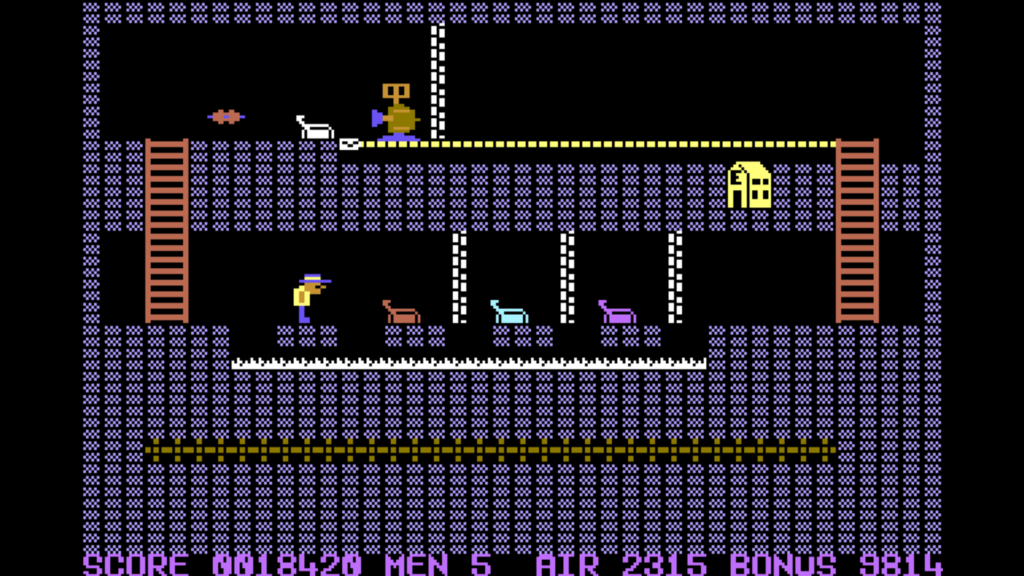Another 3D box – Big Mac on the Commodore 16/Plus 4 was an absolute gem. With its big, chunky pseudo-3D graphics, it looked incredible for the time—and it played just as well. I have especially fond memories of battling through its levels in two-player mode with my Dad, making it one of those rare games that looked technically impressive and genuinely fun to play for the cheapo price of £1.99.

So you can imagine my disappointment when I finally got my hands on the Commodore 64 port, expecting a more advanced, souped-up version… only to discover something that looked inferior from the version I knew and loved.
That’s not to say the C64 version of Big Mac is a bad game—it’s just different. Visually, it’s a big step down. Gone are the bold pseudo-3D visuals, replaced with more traditional graphics reminiscent of early platformers like Manic Miner, Jet Set Willy, and Blagger. You take control of Big Mac himself, working your way through 18 rooms—referred to as “power vaults” in the instructions—on a mission to shut down the enemy’s power station.

Each level is packed with hazards: lasers, disappearing floors, forcefields, plungers, and more. Some rooms contain levers that must be flipped to disable traps, adding a nice bit of puzzle-solving to the mix. A constantly ticking oxygen meter adds time pressure to every stage, keeping you on your toes.
Developed by Tony Kelly, a real programming wizard on the Commodore 16—with classics like Squirm, Video Meanies, and Mr. Puniverse to his name—it’s always been a mystery to me why the C64 version didn’t push the hardware harder. Yes, the C64 had less colours than the C16/Plus 4, but it surely could have managed the same 3D-style presentation with a bit of effort.

Still, if you’re into no-frills but challenging platformers, Big Mac on the C64 wasn’t a bad deal at £1.99. The early levels ease you in gently, but things ramp up quickly with trickier, more devious designs that demand real timing and precision. It might not look like much, but it kept me hooked for hours.

